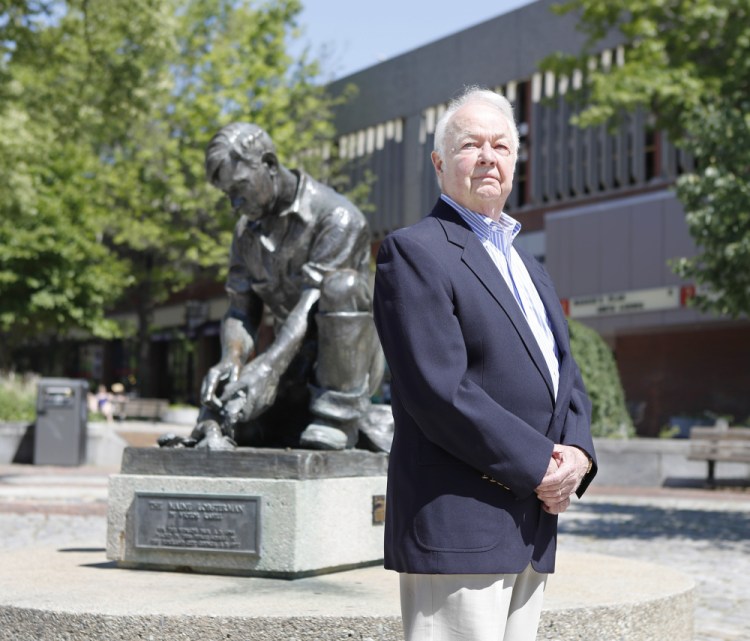Cities don’t stand still. They grow. They shrink. They can flourish. They can die.
No one seems to have understood that better than Portland native John Menario, who was honored this week by the City Council.
The plaza in front of the Nickelodeon movie theater will soon be named for the former city manager, who between 1967 and 1976 laid the groundwork for an economic rebirth of the downtown commercial center, creating the Portland that we know today.
Standing in the plaza at Temple and Spring streets, we can tick off the testaments to Menario’s vision, with tall office buildings at every corner of the intersection and a pedestrian mall leading to Monument Square.
The key to it, Menario has said, was Franklin Arterial, seven-tenths of a mile of divided highway that carries traffic between I-295, the central business district and the waterfront. It was built in 1969, and he says it made all the rest possible.
So it’s funny that Franklin Arterial is the Menario-era project that gets so much criticism.
To many who care about development in Portland, turning Franklin Street into a “cross-town expressway” with an enormous median strip was a huge, expensive mistake.
The city took out a neighborhood full of houses – something that’s in short supply today – and created a barrier for people who want to walk or ride a bike between the East End and downtown.
And it’s emblematic of the sterile, auto-centric development of the ’60s and ’70s, when walkable, mixed-use neighborhoods were razed to make a place for overbuilt roads, parking lots and strip malls.
A plan to reclaim Franklin and turn it back into an urban street was approved last year but is languishing at City Hall. The ceremony honoring Menario would be a good time for the city to thank him for what he built and recommit itself to getting the new Franklin Street project off the ground.
There’s no contradiction: You can love the city that Menario helped create even if you don’t like the road that made it happen. You can revere the man and not be wedded to the past.
After all, he certainly wasn’t.
People who are critical of Franklin Arterial and Menario should remember where Portland was in the 1960s. It had been in economic free fall since the end of World War II, when thousands of shipbuilding jobs disappeared overnight. The Maine Mall vacuumed retail business off Congress Street, and middle-class people were escaping to the suburbs.
Back then, out-of-control rents weren’t a problem – but neglected and abandoned buildings were.
Menario and others recognized that the city would have to be more car-friendly to survive. They built parking garages and “urban highways,” and they got the result they were looking for in an unprecedented building boom that gave us the downtown business district we see today.
But just because that might have been the right move in the 1970s doesn’t mean it’s what we need now.
Just like mutton-chop sideburns and bell bottoms, not every popular idea stands the test of time.
Franklin’s future is a question of value. A city street is a place for economic activity. Streets create wealth. They create jobs. They generate taxes. They should be cherished.
Roads just move vehicles. They are an expense, not a source of revenue.
You need both streets and roads in a city, but why build a road when you could have a street?
Among its many charms, the Franklin Street Reclamation Project would liberate somewhere around 5 acres of developable land, right in the heart of the city. The buildings could be tall without blocking any views and create places for people to live, work, play and do business.
And since transportation planners have learned a lot since the 1970s, the redesign would improve traffic flows, not restrict them. That’s why it has the approval of the Maine Department of Transportation, hardly a hotbed of radical urbanism.
Portland is not competing with the suburbs as it was in Menario’s day.
It’s competing against other cities all over the country for people to move here with their talent and capital to start the businesses that will mark the next phase of development.
Portland is already a magnet for young people, and they are not coming here for the parking. They are looking for the kind of neighborhoods the new Franklin Street would create.
Portland is rightly honoring Menario for having vision and showing leadership at a time when the city needed it.
That was his vision. What’s ours?
Send questions/comments to the editors.




Comments are no longer available on this story